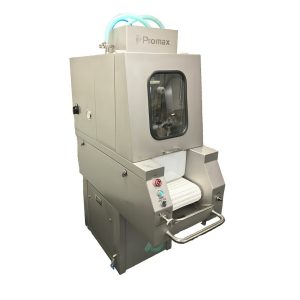In industrial and commercial settings, human-machine interface (HMI) touch screen panels are often used to provide a visual interface between humans and machines. HMIs are essentially graphical user interfaces that display information about the state of a process or machine, and they allow operators or technicians to interact with that process or machine.
When it comes time to choose an HMI touch screen panel for your needs, it can be difficult to know where to start. In this post, we’ll provide an overview of the different types of HMI touch screens available and offer some tips for choosing the right one for your needs.
What is an HMI touch screen panel?
HMI touch screen panels are a type of input device that allow humans to interact with machines. They are commonly used in industrial and manufacturing settings, but are becoming more and more popular in home automation. An HMI touch screen panel usually consists of a screen and a touch-sensitive surface. The user can then use this surface to interact with the machine or system.

How do HMI touch screen panels work?
HMI touch screen panels are a type of input device that allow users to interact with their machines.
How do they work? The user stands in front of the machine and looks at a screen. They can then use their hands to touch the screen and control what is happening. This type of device is often used in factories and other industrial settings where workers need to be able to interact with their machines quickly and easily.
What are the benefits of using an HMI touch screen panel?
There are many benefits to using an HMI touch screen panel in your business. Some of the top benefits include:
Ease of Use – An HMI touch screen panel makes it easy for your employees to interact with the machine. This makes it easy for them to input data or make changes, which can improve efficiency in your workplace.
reliability – Touch screens are known for their reliability. Unlike traditional input devices, they are not as susceptible to wear and tear, which means they will last longer and need less maintenance.
Versatility – Touch screens can be used for a variety of applications, making them a versatile tool for your business. They can be used for data entry, controlling machines or processes, and more.
If you’re looking for an easy-to-use, reliable, and versatile input device for your business, an HMI touch screen panel is a great option.
How to choose the right HMI touch screen panel for your needs?
Not all HMI touch screen panels are the same, and it’s important to select the right one for your specific needs. There are a few factors you’ll want to consider when making your decision:
1. The environment in which the panel will be used: If you’re using your HMI touch screen panel in a dusty or wet environment, you’ll need to select a panel that is resistant to those conditions.
2. The size of the screen: The size of the screen will dictate how much information you can see at once. If you need a panel with a large viewing area, you’ll need to consider that when making your selection.
3. The type of input required: Not all HMI touch screens panels are equipped with the same input methods. If you need a specific type of input, be sure to select a panel that offers it.
4. The operating system: Not all panels operate on the same operating system. If you have a specific system in mind, be sure to select a panel that is compatible with it.
Top 5 HMI touch screen panels
1. The first thing you need to consider when choosing an HMI touch screen panel is the environment in which it will be used.
2. The type of panel you require will be based on the information you need to display and the level of interaction you need from users.
3. Resolution is important when it comes to HMI touch screen panels and you should look for a panel that offers at least 800×600 resolution.
4. The size of the panel is also important and you should choose one that is appropriate for the space in which it will be used.
5. Some of the top HMI touch screen panels on the market include the Panelmate Plus II, the GT-710K, the TP-Link Touch 10, and the Hannspree HannsPad HT10PE-W1.
How to use an HMI touch screen panel?
Once you’ve selected the perfect HMI touch screen panel for your needs, it’s time to learn how to use it. First, make sure your device is properly set up and connected. Once it is, open the software or app you’ll be using to control your device. You should see a control panel with all the relevant buttons and functions.
Touching the screen will allow you to interact with whatever you’re controlling. You can drag, drop, and select buttons or icons to activate them. For a more customised experience, you can also create custom screens and shortcuts.
Conclusion:
Now that you know a little more about HMI touch screen panels, you can start thinking about which one is right for your needs. Keep in mind the features you want and the environment where the panel will be used. With all of this in mind, you should be able to find the perfect HMI touch screen panel for your business.



